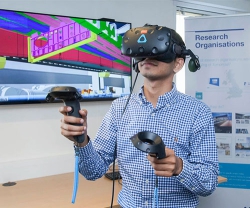General Atomics Aeronautical Systems, Inc. (GA-ASI) and the U.S. Marine Corps (USMC) celebrated the delivery of the first MQ-9A Extended Range (ER) Unmanned Aircraft System (UAS) to Marine Unmanned Aerial Vehicle Training Squadron 2 (VMUT-2).
The delivery of the MQ-9A ER on March 18, 2024, is part of the Marine Air-Ground Task Force (MAGTF) Unmanned Expeditionary (MUX) Program, which ordered eight MQ-9A ER UAS as part of the ARES Indefinite-Delivery/Indefinite-Quantity (ID/IQ) contract.
“It’s exciting to make this first delivery to VMUT-2, which continues to build the relationship between GA-ASI, the USMC, and NAVAIR (Naval Air Systems Command),” said GA-ASI Vice President of DoD Strategic Development Patrick Shortsleeve.
“GA-ASI has been a contracted warfighting partner of the USMC for several years and VMUT-2’s ability to produce aircrews for the USMC is a tremendous advancement in the USMC’s organic capability,” he added.
VMUT-2 is a UAS training squadron for the USMC based at Marine Corps Air Station Cherry Point in Havelock, North Carolina.
The MQ-9A ER is designed with field-retrofittable capabilities such as wing-borne fuel pods and reinforced landing gear that extend the aircraft’s endurance to more than 30 hours while further increasing its operational flexibility. The aircraft provides long-endurance, persistent surveillance capabilities with Full-Motion Video and Synthetic Aperture Radar/Moving Target Indicator/Maritime Mode Radar. An extremely reliable aircraft, MQ-9A ER is equipped with a fault-tolerant flight control system and a triple-redundant avionics system architecture. It is engineered to meet and exceed manned aircraft reliability standards.
General Atomics Aeronautical Systems, Inc. (GA-ASI), an affiliate of General Atomics, is a leading designer and manufacturer of proven, reliable RPA systems, radars, and electro-optic and related mission systems, including the Predator® RPA series and the Lynx® Multi-mode Radar.
With more than eight million flight hours, GA-ASI provides long-endurance, mission-capable aircraft with integrated sensor and data link systems required to deliver persistent situational awareness. The company also produces a variety of sensor control/image analysis software, offers pilot training and support services, and develops meta-material antennas.






















